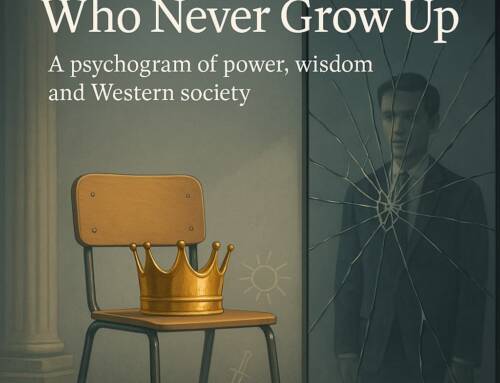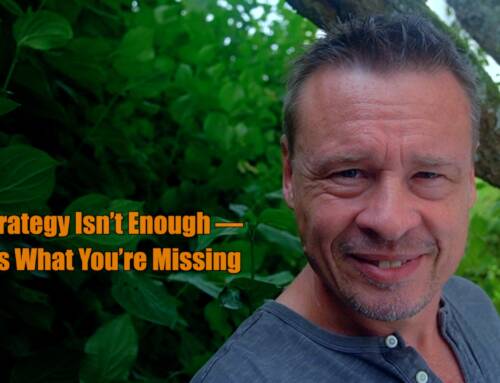From ‘riding a dead horse’ to ‘thinking outside the box’, English idioms are an integral part of everyday communication and can have great impact on the effectiveness and efficiency of international development professionals’ work.
Colorful expressions add depth and nuance to our speech, but for us non-native English speakers, they can also be a source of confusion and misinterpretation.
In this blog piece, we will explore 25 of the most important and frequently used English idioms in the field of international development cooperation, and provide practical examples of how they can be used to enhance communication and collaboration between development professionals from diverse cultural backgrounds.
“Riding a dead horse” – To persist in a futile effort.
The origin of this idiom is not clear, but it is often used to describe a situation where someone is putting effort into something that has already failed or is not going to succeed — not uncommon in development cooperation.
Example: “The project manager realized that they were riding a dead horse in trying to secure funding from the government, as the policy had changed and funds were no longer available for that sector. They decided to change strategy and explore alternative funding sources.”
“Adding fuel to the fire” – To make a situation worse.
This idiom is based on the literal meaning of adding fuel to a fire, making it grow and spread.
Example: “The project coordinator warned the team not to add fuel to the fire by making controversial statements during the stakeholder consultation. The community was already concerned about the project and any additional negative comments could further escalate the situation.”
“Breaking the ice” – To start a conversation or relationship on a friendly note.
This idiom is thought to have originated from the practice of breaking up ice in rivers to make it easier for ships to navigate.
Example: “The donor representative broke the ice by sharing a personal story about their experience working in the region, making the presentation more engaging for the audience. This helped to establish a friendly and approachable tone for the discussion.”
“Seeing eye to eye” – To have mutual understanding and agreement.
The origin of this idiom is unclear, but it may refer to standing close enough to someone to look them in the eye and communicate effectively.
Example: “It was a productive meeting as all partners saw eye to eye on the project implementation plan. They agreed on the timeline, budget, and key deliverables, setting a strong foundation for successful collaboration.”
Note that “seeing eye to eye” and “being on eye level” are two different idioms that have different meanings. “Seeing eye to eye” means to have mutual understanding, agreement, or a common perspective on a particular issue. It suggests that two or more people are in harmony and on the same page about a particular topic. “Being on eye level”, on the other hand, means to be on equal footing or to treat someone with respect and fairness, regardless of their position or status. It suggests that one is treating another person as an equal and not looking down on them or considering them inferior.
In the context of international development, both idioms can be important for effective communication and collaboration. For example, when working with communities on a development project, it is important to “be on eye level” by listening to their concerns and treating them as partners in the process, rather than just imposing solutions from above. At the same time, “seeing eye to eye” on shared goals and approaches can help to ensure that everyone is working together effectively towards a common goal.
“Put all your eggs in one basket” – To risk everything on a single opportunity.
This idiom is thought to have originated from the practice of carrying eggs in a basket and risking them all if the basket was dropped or damaged.
Example: “The project manager advised the team not to put all their eggs in one basket and to have contingency plans in place. They encouraged the team to diversify their efforts and explore multiple options, reducing the risk of failure.”
“Put your money where your mouth is” – To back up words with actions.
This idiom is thought to have originated from the practice of betting money on a statement or claim to demonstrate confidence in it.
Example: “The donor agency was asked to put their money where their mouth is and provide the necessary funds to support the project. The team was encouraged to make a tangible commitment to the project, showing their support through financial contributions.”
“The ball is in your court” – To indicate that it is someone else’s turn to take action.
This idiom is thought to have originated from the sport of tennis, where the ball is passed back and forth between players.
Example: “The project manager told the consultants that the ball was in their court and it was up to them to present the findings of their study. The team was expected to take the lead and move the project forward, based on the information and recommendations provided.”
“A catch-22 situation” – A paradoxical situation from which there is no escape.
This idiom is named after Joseph Heller’s novel “Catch-22”, where a character is caught in a paradoxical situation with no solution.
Example: “The project faced a catch-22 situation as they needed funding to start the project, but they couldn’t get funding without demonstrating progress. The team was stuck in this cycle, unable to move forward without support but unable to secure support without progress. This created a challenging obstacle that needed to be overcome in order to make progress on the project.
“A drop in the ocean” – A small and insignificant contribution.
This idiom refers to a single drop of water being insignificant compared to the vastness of an ocean.
Example: “The project received a small donation from a local community, but the project manager acknowledged that it was just a drop in the ocean in terms of the overall funding needed for the project. The team was grateful for the support but recognized that much more was needed to make the project a success.”
“A shot in the dark” – A guess or an attempt with little chance of success.
This idiom is thought to have originated from hunting or shooting, where a shot fired without a clear target is unlikely to hit anything.
Example: “The project team took a shot in the dark and proposed a new approach to the implementation, as they were running out of options. The team recognized that it was a risky move, but they were willing to take the chance in the hope of finding a solution.”
“A stitch in time saves nine” – Taking preventive action now will save time and resources in the future.
This idiom is based on the idea of fixing a tear in cloth before it becomes a larger problem requiring more effort to repair.
Example: “The project manager took the advice to heart and invested in capacity building for the team, recognizing that a stitch in time saves nine. The team was able to prevent potential problems from escalating and saved time and resources by taking proactive steps to improve their skills and knowledge.”
“To break the ice” – To make the first move to establish a friendly relationship or to start a conversation in a social setting.
Example: “At the international development conference, the team leader decided to break the ice by initiating a conversation with representatives from other countries. The friendly exchange helped to create a more relaxed and open atmosphere for the rest of the conference.”
“To hit the ground running” – To start working on a project or task immediately with full energy and determination.
This idiom is thought to have originated from running in a race, where the goal is to start quickly and maintain momentum.
Example: “The new project manager was eager to get started and hit the ground running. He immediately set to work on creating a detailed project plan and organizing the team, determined to make progress as quickly as possible.”
“To kill two birds with one stone” – To accomplish two tasks with a single effort.
This idiom is thought to have originated from hunting, where a skilled hunter could kill two birds with a single shot.
Example: “The project team was able to kill two birds with one stone by conducting a survey and collecting data for the project at the same time as they were doing outreach to raise awareness about the project in the community.”
“To have a trump card” – To have an advantage or a key piece of information that gives one an edge in a situation.
This idiom is thought to have originated from playing card games, where a trump card can be used to win a trick.
Example: “The project team felt confident about the negotiation with the local government because they had a trump card – a letter of support from a well-respected community leader. The team believed that this would give them an advantage in the negotiations and help them to achieve their goals.”
“To see the bigger picture” – To have a comprehensive understanding of a situation or issue, taking into account all relevant factors and considering the long-term consequences.
Example: “The project manager was able to see the bigger picture and took a long-term view of the project, recognizing that success would require building strong relationships with the local community, not just implementing the project activities.”
“To be a catch-22” – To be in a situation where either choice has a negative consequence.
This idiom is based on the novel “Catch-22” by Joseph Heller, which describes a paradoxical situation where an airman cannot be grounded from combat duty because he is mentally unfit, but cannot prove that he is mentally unfit because he wants to be grounded.
Example: “The project team found themselves in a catch-22 situation where they needed approval from the local government to proceed with the project, but the local government was only willing to give approval once the project was underway. The team was unable to move forward without the approval, but unable to secure the approval without making progress on the project.”
“To have a lot on one’s plate” – To have a large number of responsibilities or tasks to manage.
This idiom is thought to have originated from the idea of having a full plate of food, indicating that one has a lot to consume or handle.
Example: “The project manager had a lot on his plate, with multiple projects to manage and a tight deadline for the current project. Despite the challenges, he remained focused and determined to make progress and deliver results.”
“To be stuck in a rut” – To be in a situation where one is unable to move forward and make progress.
This idiom is thought to have originated from the idea of a wheel of a cart getting stuck in a rut in the ground, making it difficult to move.
Example: “The project team was feeling stuck in a rut, unable to make progress on the project due to various challenges and setbacks. The project manager decided to bring in an outside consultant to help identify the root cause of the problems and develop a plan for getting back on track.”
“To be a wild card” – To be an unpredictable element in a situation, where one’s actions or decisions cannot be easily predicted.
This idiom is thought to have originated from card games, where a wild card can be used as any card and is therefore unpredictable.
Example: “The local government representative was considered a wild card in the project negotiations, as no one was sure what he would agree to or what objections he would raise. The project team was prepared for any eventuality, and worked to build a strong relationship with him in the hopes of reaching a successful agreement.”
“To be a square peg in a round hole” – To be ill-suited for a particular role or situation, as one’s abilities or personality do not match the requirements.
This idiom, often used in the consulting scene, relates to the educational toy and describes the incident where something impossible is attempted.
Example: “The project team realized that one of the team members was a square peg in a round hole, as his skills and experience were not well-suited to the tasks he was assigned. The team leader made the difficult decision to reassign him to another project where he would be a better fit and able to contribute more effectively.”
“To beat a dead horse” – To continue discussing a matter that has already been thoroughly discussed and has no further useful outcome.
This idiom is obviously similar to “riding a dead horse. It could come from the idea of beating a dead horse in an attempt to revive it, which is clearly futile.
Example: “At the project team meeting, the team members realized that they were beating a dead horse by continuing to discuss the same issues and problems that had already been discussed and resolved. The team leader stepped in and redirected the discussion to the next topic on the agenda, encouraging the team to move forward and make progress.”
“Using a scattergun approach” – To attack or solve a problem in a haphazard or indiscriminate manner, without a clear plan or strategy.
This idiom is thought to have originated from the scattergun, a type of shotgun that sprays shot in a wide arc, making it difficult to hit a specific target.
Example: “The project manager was concerned that the team was using a scattergun approach to solving the project problems, as they seemed to be trying everything without a clear sense of what was working and what wasn’t. He suggested that the team take a more focused and strategic approach, by identifying the root causes of the problems and developing targeted solutions that would address them effectively.”
“Ad-hocism” – A approach or method that is improvised or done on an as-needed basis, without prior planning or preparation.
This term is derived from the Latin phrase “ad hoc”, which means “for this”. It is sort of a jargon version and related to the scattergun approach.
Example: “The project team was struggling with ad-hocism, as they often found themselves having to make decisions and take actions without proper planning or preparation. The project manager recognized that this was causing problems and putting the project at risk, and so she developed a more structured and organized approach that would help the team to be more effective and efficient in their work.”
“Thinking outside the box” – To think in a creative and innovative way, beyond the conventional and established ways of thinking and doing things.
This idiom is also part of the stereotypical lingo of the consulting scene relates to a box, which represents a confined and limited way of thinking, and the need to break out of that box to see things in a new and different way.
Example: “The project team was facing a challenging problem that seemed to have no solution, but the project manager encouraged them to think outside the box. With some creative thinking and brainstorming, the team was able to come up with an innovative solution that had not been considered before, and that ended up being very effective in resolving the problem.”
“Bite the bullet” – To face a difficult or unpleasant situation with courage and determination.
Example: “The project manager had to bite the bullet and present the report to the donor, despite the challenges they had faced.”
“Cut to the chase” – To get to the point without wasting time.
Example: “The team leader asked the consultant to cut to the chase and give them the main recommendations for the project.”
“Hitting the ground running” – To start a new task or job with energy and determination, making quick progress.
Example: “The new coordinator hit the ground running and quickly organized a meeting with all the stakeholders.”
“Bend over backwards” – To make a great effort to please or accommodate someone.
Example: “The logistics team bent over backwards to ensure the delivery of supplies to the remote community.”
“Cry over spilt milk” – To worry about something that cannot be changed or undone.
Example: “The program manager advised the team not to cry over spilt milk and to focus on finding ways to overcome the setback.”
“Kill two birds with one stone” – To accomplish two tasks with a single action.
Example: “The workshop organizer managed to kill two birds with one stone by combining capacity building with networking opportunities for participants.”
“At the end of the day” – Used to summarize a situation or draw a conclusion.
Example: “At the end of the day, the most important thing is to ensure that the project has a positive impact on the community.”
“Throw in the towel” – To give up or abandon an effort.
Example: “The project manager refused to throw in the towel, even though the progress was slow and there were many challenges.”
“Burn the midnight oil” – To work late into the night.
Example: “The research team burned the midnight oil to meet the deadline for submitting their report.”
“On the same page” – To have a shared understanding or agreement.
Example: “It is important that all partners are on the same page regarding the project objectives and implementation strategies.”
“Giving someone a heads-up” – To give someone advance notice or a warning about something.
Not to be taken for “keeping your head or chin up” which means to maintain a positive attitude when faced with adversity.
Giving a heads-up is thought to come from the idea of a lookout or watchman sounding an alarm to alert others of danger or to prepare them for an incoming threat. In the context of international development, “giving someone a heads-up” can be an important tool for ensuring effective communication and collaboration between team members, stakeholders, and partners. For example, if a project manager knows that a critical deadline is approaching, they may “give their team a heads-up” to ensure that everyone is prepared and working towards a successful outcome.
How to take it from here
I want to encourage further thinking on the subjects related to the idioms given. So here is one example on how one could drive the ideas further using the last item “thinking outside the box”.
The problem with the notion of “thinking outside the box” is that it can be overused and become clichéd, leading to a lack of creativity and originality in the thinking and problem-solving process. Additionally, the phrase can be interpreted as an excuse for not following established norms or conventions, and can sometimes lead to ideas that are maybe unconventional but also impractical. It is therefore important to balance the need for creative thinking with a practical and achievable approach, and to consider the feasibility of the ideas generated through “outside the box” thinking before attempting to implement them.
Remember, in order to effectively think outside the box, one must first be aware of the boundaries and limitations imposed by the box, and then actively seek to expand beyond those boundaries. This requires a good understanding of the constraints and limitations of the problem or situation, as well as an openness to new and different perspectives. By combining a thorough understanding of the existing norms and constraints with a willingness to explore new and unconventional ideas, it is possible to find truly innovative solutions and breakthroughs. Here it becomes that the basis for breakthroughs doesn’t have to be technology at all. Technology might be the first step but the stepping stone to take a first promising leap from is a good challenge to conventions in thinking at a particular point in time.
A similar idea is that to effectively challenge the status quo and find innovative solutions, it is important to have a deep understanding of the system, including its rules, norms, and limitations. This knowledge can then be used to identify areas for improvement and to create new approaches that challenge the conventional ways of thinking. Keep in mind though simply knowing the system well only goes so far – one must also be willing to take risks and embrace new and unconventional ideas in order to drive change and achieve meaningful progress.
NB: The article was created with support of chatgpt and the visual with DALL-E





